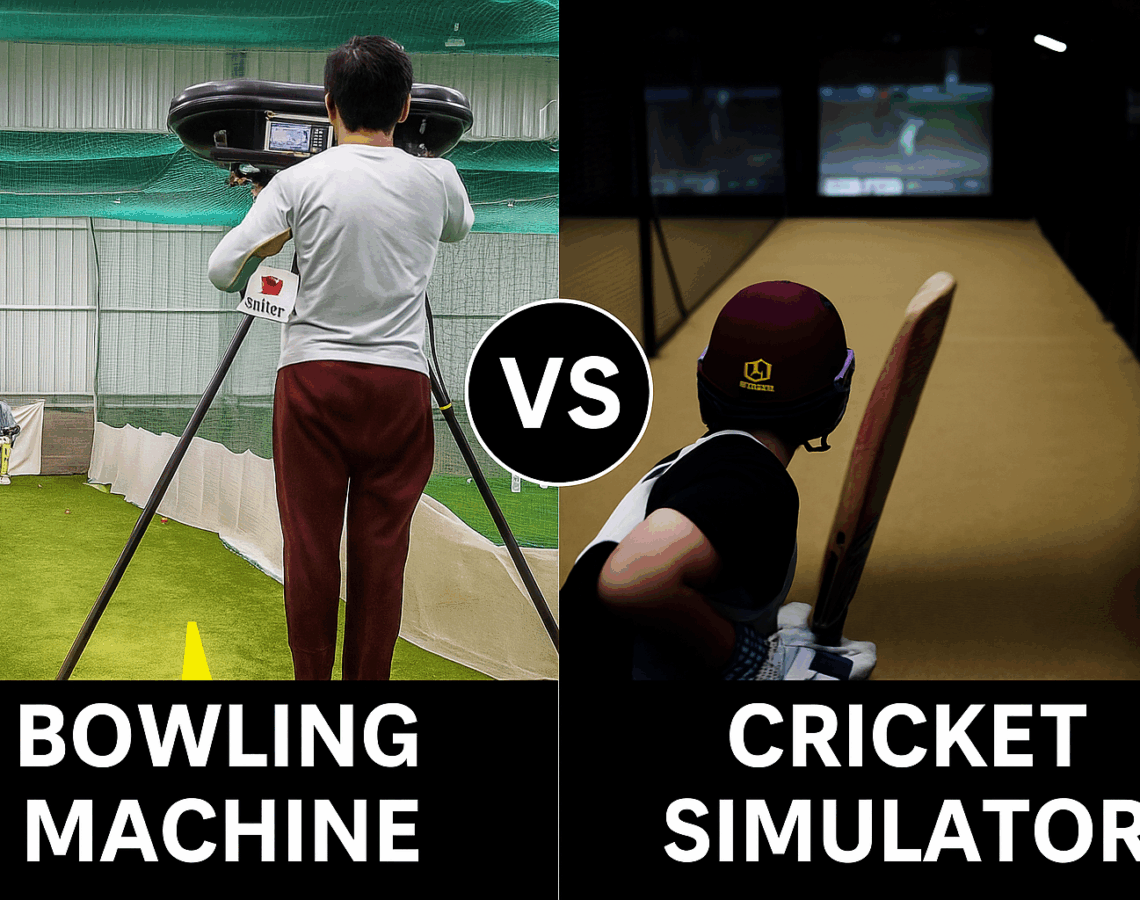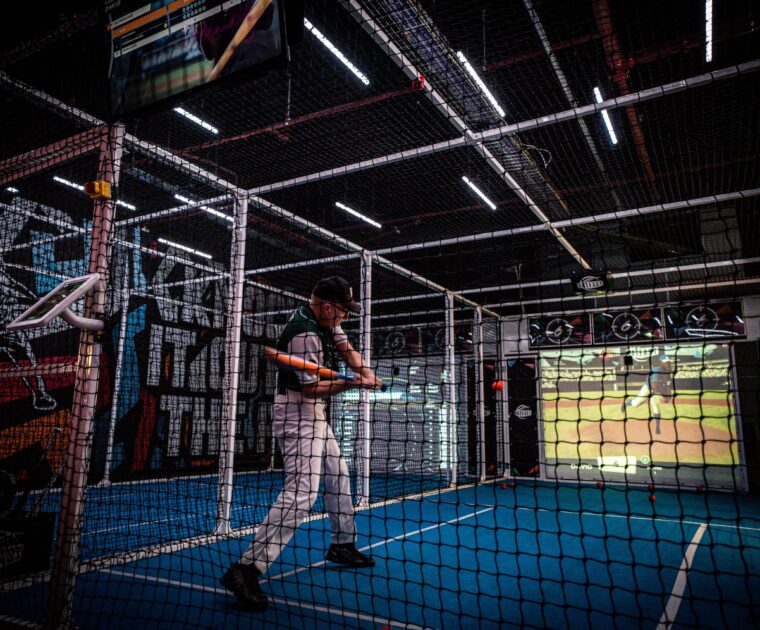Cricket Simulator vs Bowling Machine: What’s the Real Difference?

Bowling machines revolutionized cricket practice when they first entered academies over two decades ago. For the first time, players could face hundreds of consistent deliveries to sharpen timing, technique, and confidence, no bowler required. Even today, they remain central to professional training facilities worldwide, valued for their precision and consistency.
But as cricket evolved, so did the way players train. The game’s shift toward analytics, accessibility, and personalization gave rise to a smarter alternative: cricket simulators. They deliver not just repetition, but realism, data, and engagement that traditional machines simply can’t match. Read on to understand how cricket simulators are redefining the future of cricket training.
What Makes a Bowling Machine Useful and Where Does It Fall Short?
A bowling machine is a remarkable invention, but it still depends heavily on manual setup and supervision.
Someone must stand beside it to load balls constantly and manually adjust swing, spin, or speed. For beginners or kids, this setup can be confusing to operate, and often incompatible with softer practice balls. They’re also primarily limited to professional setups, where trained staff can manage calibration, ball types, and safety. For the everyday cricketer or junior player, that level of dependency makes consistent training difficult.
How Do Cricket Simulators Change the Game?
Cricket simulators simplify and elevate the training experience. With one tap, you can adjust speed, length, and swing, no manual tweaking, no ball refilling. The machine holds the capacity to store and deliver over 300 balls automatically, allowing uninterrupted, operatorless sessions with maximum output. The simulator’s high-speed cameras and ball-tracking system record every delivery and shot, producing instant data on bat speed, shot timing, and accuracy. For players, this means smarter feedback. For coaches, it means objective insight into progress.

Are Simulators Just for Professionals?
Not anymore. That’s where the real innovation lies. Cricket Simulators are designed to make elite-level training accessible to everyone, from grassroots players to club cricketers and even children picking up a bat for the first time.
Gamified game modes turn practice into a competitive and immersive experience, where players aim for targets, score points, and challenge friends, expanding cricket beyond traditional drills into interactive, inclusive participation. Cricket Simulators are able to hit the sweet spot between console gaming and real sports.
How Does Data and Gamification Democratize Cricket Training?
Data is no longer reserved for top-tier athletes. Cricket Simulators capture and stores every ball hit, allowing players to track improvement over time. It offers Player Profiles with real-time stats and video clips d, turning performance data into motivation and community sharing. Gamification and analytics together make cricket training social, rewarding, and measurable, just like modern fitness or gaming platforms.
The Verdict
Bowling machines brought precision. Cricket simulators bring intelligence. By combining automation, analytics, and accessibility, they make quality cricket training possible for everyone, not just professionals.
Explore BatFast to experience the next generation of cricket practice.
FAQS
1. How is a cricket simulator different from a bowling machine?
Simulators automate everything, ball feeding, pace, and swing, while tracking every shot for instant feedback and analytics. It democratises cricket for everyone.
2. Can I use a cricket simulator without a coach or operator?
Yes. Cricket simulators are fully operatorless, designed for solo training with automatic ball loading and AI-powered data capture.
3. Are cricket simulators suitable for beginners or kids?
Absolutely. They use softer, compatible balls, adjustable speeds, and gamified modes that make cricket fun and safe for all ages.
4. What kind of data does a simulator track?
Metrics include bat speed, shot accuracy, launch angle, and timing, all stored in the player’s digital profile for review and progress tracking.
5. Why are simulators considered the future of cricket training?
Because they combine automation, analytics, and accessibility, removing barriers like weather, space, and supervision, making elite training available to everyone.




Leave a Reply
You must be logged in to post a comment.